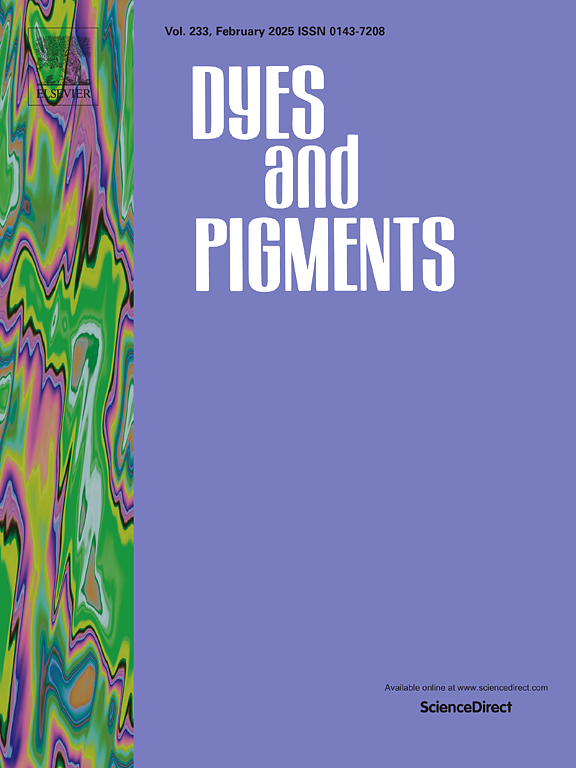Controllable isomerization of a light-sensitive spiropyran unit via the assembly of pyrenyl-modified rod-coil amphiphiles
IF 4.1
3区 工程技术
Q2 CHEMISTRY, APPLIED
引用次数: 0
Abstract
New types of supramolecular light-responsive assembly systems have been constructed upon the addition of pyrene functional groups to spiropyran-derived amphiphilic rod-coil molecules. These molecules are composed of hydrophobic pyrene, biphenylacetylene and aldehyde-modified spiropyran group as rod building block as well as flexible oligoether chains with non lateral methyl or lateral methyl as coil segment. Our self-assembly investigations revealed that compared to molecules with noncovalently linked pyrene groups, these molecules were arranged relatively compactly during their aggregation via the strong π-π stacking effect provided by the pyrene groups. Meanwhile, we found that the steric hindrance effect of the methyl side chains at the rigid-flexible interface loosely stack the molecules to form nanostructures with a larger curvature in 99 % aqueous solution. Notably, the strong π-π stacking intermolecular interaction of the pyrene and ring-opening isomer induce the formation of nano-assemblies under stimulation with ultraviolet (UV) light, which subsequently block the ring-closing process of the spiropyran in solution, resulting in the construction of new organized disc-like structures and spherical micelles. Interestingly, the solution of complexes formed between rod-coil molecules with pyrene group and 2, 4, 5, 7-tetranitro-9-fluorenone (TNF) displayed good fluorescence sensing performance for TNF in both an organic solvent and mixed solvent system with a high-water content, which has the potential to be developed into sensors suitable for multi-nitro electron acceptor molecules.

求助全文
约1分钟内获得全文
求助全文
来源期刊

Dyes and Pigments
工程技术-材料科学:纺织
CiteScore
8.20
自引率
13.30%
发文量
933
审稿时长
33 days
期刊介绍:
Dyes and Pigments covers the scientific and technical aspects of the chemistry and physics of dyes, pigments and their intermediates. Emphasis is placed on the properties of the colouring matters themselves rather than on their applications or the system in which they may be applied.
Thus the journal accepts research and review papers on the synthesis of dyes, pigments and intermediates, their physical or chemical properties, e.g. spectroscopic, surface, solution or solid state characteristics, the physical aspects of their preparation, e.g. precipitation, nucleation and growth, crystal formation, liquid crystalline characteristics, their photochemical, ecological or biological properties and the relationship between colour and chemical constitution. However, papers are considered which deal with the more fundamental aspects of colourant application and of the interactions of colourants with substrates or media.
The journal will interest a wide variety of workers in a range of disciplines whose work involves dyes, pigments and their intermediates, and provides a platform for investigators with common interests but diverse fields of activity such as cosmetics, reprographics, dye and pigment synthesis, medical research, polymers, etc.
 求助内容:
求助内容: 应助结果提醒方式:
应助结果提醒方式:


